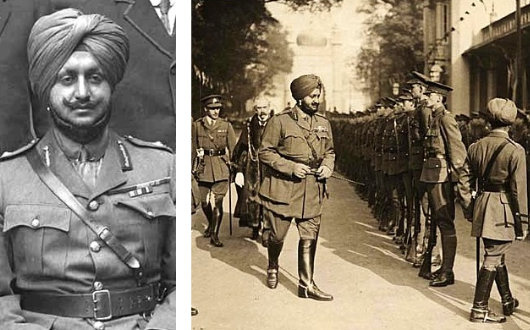
About Andrew Cusack
 Writer, web designer, etc.; born in New York; educated in Argentina, Scotland, and South Africa; now based in London.
Writer, web designer, etc.; born in New York; educated in Argentina, Scotland, and South Africa; now based in London. read more
News
Blogs
Reviews & Periodicals
Arts & Design
World
France
Mitteleuropa
Knickerbockers
Argentina
The Levant
Africa
Cape of Good Hope
Netherlands
Scandinavia
Québec
India
Muscovy
Germany
Academica
H.H. the Maharaja of Patiala

Lieutenant-General His Highness Farzand-i-Khas-i-Daulat-i-Inglishia, Mansur-i-Zaman, Amir ul-Umara, Maharajadhiraja Raj Rajeshwar, 108 Sri Maharaja-i-Rajgan, Maharaja Sir Bhupinder Singh, Mahendra Bahadur, Yadu Vansha Vatans Bhatti Kul Bushan, Maharaja of Patiala, Knight Grand Commander of the Order of the Star of India, Knight Grand Commander of the Order of the Indian Empire, Knight Grand Cross of the Royal Victorian Order, Knight Grand Cross of the Order of the British Empire, Knight Grand Cross of the Order of St. Gregory the Great, Knight Grand Cross of the Order of the Dannebrog, Grand Cross of the Order of the Redeemer, Grand Cross of the Order of Charles III, Grand Cross of the Legion d’Honneur, Knight Grand Cross of the Order of Sts. Maurice & Lazarus, Knight Grand Cross of the Order of the Crown of Italy, Grand Cross of the Order of the White Lion, Grand Cordon of the Order of the Nile, Grand Cordon of the Order of Leopold, ascended to the throne of Patiala in 1900. A keen cricketer, the Maharaja captained the 1911 Indian cricket tour of England, and played in twenty-seven games of cricket at first-class level between 1915 and 1937. Indeed, for the 1926-27 season he played for the MCC itself.
Though only in his twenties, His Highness served on the General Staff during the First World War. The Maharaja represented India at the League of Nations in 1925, and served as Chancellor of the Indian Chamber of Princes for a total of ten years between 1926 and 1938. He had a certain flair which was attested to by his collection of Rolls-Royces, and his commissioning of the famous “Patiala Necklace” from Cartier to add the the crown jewels of his princely state. In the Indian princely manner, he married ten wives and had several concubines, producing a total of eighty-eight acknowledged children in total. He died in 1938, not having reached a half-century in age, and his son Lieut. Yadavindra Singh succeeded him as Maharaja of Patiala.
Yadavindra was a sportsman himself, playing test cricket for India in 1934, and serving as President of the Indian Olympic Committee from 1938 until 1960. Knighted in 1942, he continued in the footsteps of his father as Chancellor of the Chamber of Princes in 1943-44, but his princely state was merged into the Indian Union in May 1948. Sir Yadavindra was appointed “Rajpramukh” (a sort of regal governorship) of the Patiala & East Punjab States Union until it was merged into the Punjab state in 1956. Sir Yadavindra was appointed India’s delegate to the United Nations General Assembly in 1956-57, to UNESCO in 1958, and to the FAO intermittently from 1959 to 1969, excepting his period as India’s Ambassador to Italy in 1965-66. India appointed him Ambassador to the Court of the Netherlands in 1971, and he died suddenly serving in that office in 1974. Yadavindra Public School, the boarding school he founded in 1948, is today ranked among the top private schools in the subcontinent.
Capt. Amerinder Singh, son to Yadavindra, grandson to Bhupinder, officer of the Indian Army, became head of the Princely House of Patiala upon the death of his father, but of course the princely state had been abolished decades before. Nonetheless, the peoples of the Punjab bestowed power upon him as their Chief Minister, in which capacity he served from 2002 to 2007.
What is remarkable about the family is actually how unremarkable they are. The Indian Empire included hundreds of princely states under the overarching protection of the King-Emperor until 1947-48 when they were merged into the Indian Union by varying degrees of force, intimidation, or persuasion. As is to be expected, most of these dynasties have retained some degree of influence in local affairs, the central government, and the armed forces.
Search
Instagram: @andcusack
Click here for my Instagram photos.Most Recent Posts
- Sag Harbor Cinema March 26, 2025
- Teutonic Takeover March 10, 2025
- Katalin Bánffy-Jelen, R.I.P. March 3, 2025
- Substack Cusackiensis March 3, 2025
- In the Courts of the Lord February 13, 2025
Most Recent Comments
Book Wishlist
Monthly Archives
Categories


